About Los Angeles CA Tourism
 |
| Los Angeles Attractions | Cheap Hotels in Los Angeles | Los Angeles CA Tourism |
The city of Los Angeles (also known as the "City of Angels" or simply LA) is the largest city in California. Located on a broad basin in Southern California, it is surrounded by vast mountain ranges, deep valleys, forests, desert, and the Pacific Ocean.
 |
| Los Angeles |
The metropolitan area is the second largest in the United States in terms of population, home to nearly 18 million people who hail from all parts of the globe and speak over a hundred different languages. The metropolitan area is centered in Los Angeles County, but stretches into Orange County, Ventura County, San Bernardino County, and Riverside County.
Los Angeles is an important center of culture, business, media, and international trade, but it is most famous for being the center of the world's entertainment industry, which forms the base of its global status.
Los Angeles was founded on September 4, 1781, by Spanish governor Felipe de Neve. It became a part of Mexico in 1821 following the Mexican War of Independence. In 1848, at the end of the Mexican–American War, Los Angeles and the rest of California were purchased as part of the Treaty of Guadalupe Hidalgo, thereby becoming part of the United States. Los Angeles was incorporated as a municipality on April 4, 1850, five months before California achieved statehood.
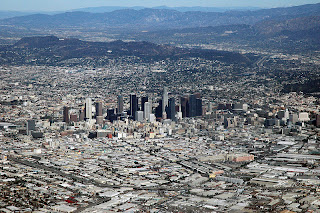 |
| City of Angels, Los Angeles |
Nicknamed the City of Angels, Los Angeles is a leading world center of business, international trade, entertainment, culture, media, fashion, science, sports, technology, and education, and has been ranked the third richest city and fifth most powerful and influential city in the world. The city is home to renowned institutions covering a broad range of professional and cultural fields and is one of the most substantial economic engines within the United States. The Los Angeles combined statistical area (CSA) has a gross metropolitan product (GMP) of $831 billion (as of 2008), making it the third largest economic center in the world, after the Greater Tokyo and New York metropolitan areas. As the home base of Hollywood, it is also known as the "Entertainment Capital of the World," leading the world in the creation of motion pictures, television productions, stage productions, video games, and recorded music. The importance of the entertainment business to the city has led many celebrities to call Los Angeles and its surrounding suburbs home. Additionally, Los Angeles hosted the Summer Olympics in 1932 and 1984.
Fast Fact About Los Angeles California:
State:
 |
| Map of Los Angeles |
Area:
502.693 sq mi (1,301.970 km2)L.A., CA Weather:
The daytime temperature in L.A. hovers in the mid to upper 60s December through March. Come spring, temperatures edge up into the 70s, then in summer, the 80s (and into the 90s in July and August). One thing to remember about L.A. is that even when the days are hot, the temperature drops anywhere from 20 to 30 degrees at night. Bring sweaters.Time zone of Los Angeles CA:
PST (UTC-8), Summer (DST) PDT (UTC−7)Area code(s):
213, 310/424, 323, 661, 747/818Best time to Visit in los Angeles:
Like all big cities, L.A. gets touristy in the summer, though it's actually not the best time to visit since the city can be smoggy and the beaches foggy (the latter mostly in June). Unless your kids have their hearts set on a lot of beach days, September and October are perfect (and you actually can still go to the beach on some days).
Indian summer and early fall tend to be warm and clear, and the crowds have died down. Spring is also a great time to come (though May can be gloomy down by the beach). Los Angeles does cool off in the winter months, but it never gets very, very cold, and you can usually spend plenty of time outdoors.
Los Angeles hosted two Olympic Games:
Summer 1984 and Summer 1932Getting Around in Los Angeles, CA:
Los Angeles (L.A.) is a car town, so plan on renting one when you arrive. The good news is that a car will allow you to really see the city in all its varying shades of glory: Just driving Sunset Boulevard, beginning at the beach and following it past UCLA, through Beverly Hills and Hollywood all the way to downtown, will give you and your kids a real taste of L.A.Google Los Angeles Map:
View Larger Map
How to Reach Los Angeles, CA:
Los Angeles Airport:
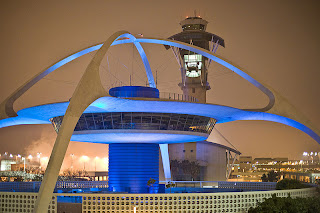 |
| Los Angeles International Airport (LAX) |
In the Los Angeles metropolitan area there are six commercial airports and many more general-aviation airports.
The primary Los Angeles airport is Los Angeles International Airport (LAX). The fifth busiest commercial airport in the world and the third busiest in the United States, LAX handled 61.9 million passengers, 1.884 million metric tons of cargo and 680,954 aircraft movements in 2007.
Other major nearby commercial airports include: LA/Ontario International Airport (serves the Inland Empire); Bob Hope Airport (formerly known as Burbank Airport; serves the San Fernando and San Gabriel Valleys); Long Beach Airport (serves the Long Beach/Harbor area); John Wayne Airport (serves the Orange County area); LA/Palmdale Regional Airport (serves the northern outlying communities of the Santa Clarita and Antelope Valleys although has little passenger traffic).
The world's busiest general-aviation airport is also located in Los Angeles, Van Nuys Airport.
Los Angeles Seaports:
 |
| Port of Los Angeles |
The Port of Los Angeles is located in San Pedro Bay in the San Pedro neighborhood, approximately 20 miles (32 km) south of Downtown. Also called Los Angeles Harbor and WORLDPORT LA, the port complex occupies 7,500 acres (30 km2) of land and water along 43 miles (69 km) of waterfront. It adjoins the separate Port of Long Beach.
The sea ports of the Port of Los Angeles and Port of Long Beach together make up the Los Angeles/Long Beach Harbor. Together, both ports are the fifth busiest container port in the world, with a trade volume of over 14.2 million TEU's in 2008. Singly, the Port of Los Angeles is the busiest container port in the United States and the largest cruise ship center on the West Coast of the United States – The Port of Los Angeles' World Cruise Center served about 800,000 passengers in 2009.
There are also smaller, non-industrial harbors along Los Angeles' coastline. Safety is provided at the only beach controlled by Los Angeles City by the highly trained Los Angeles City lifeguards.
The port includes four bridges: the Vincent Thomas Bridge, Henry Ford Bridge, Gerald Desmond Bridge, and Commodore Schuyler F. Heim Bridge.
Passenger ferry service from San Pedro to the city of Avalon on Santa Catalina Island is provided by Catalina Express.
Transit systems of Los Angeles:
The Los Angeles County Metropolitan Transportation Authority and other agencies operate an extensive system of bus lines, as well as subway and light rail lines across Los Angeles County, with a combined monthly ridership (measured in individual boardings) of 38.8 million as of September, 2011. The majority of this (30.5 million) is taken up by the city's bus system, the second busiest in the country. The subway and light rail combined average the remaining roughly 8.2 million boardings per month. In 2005, 10.2% of Los Angeles commuters rode some form of public transportation.
The city's subway system is the ninth busiest in the United States and its light rail system is the country's second busiest. The rail system includes the Red and Purple subway lines, as well as the Gold, Blue, and Green light rail lines. The first phase of the Expo Line is scheduled to open on April 28, 2012. The Metro Orange Line is a bus rapid transit line with stops and frequency similar to those of a light rail. The city is also central to the commuter rail system Metrolink, which links Los Angeles to all neighboring counties as well as many suburbs.
Besides the rail service provided by Metrolink and the Los Angeles County Metropolitan Transportation Authority, Los Angeles is served by inter-city passenger trains from Amtrak. The main rail station in the city is Union Station just north of Downtown.
Intercity highways:
The major highway routes providing intercity connections are Interstate 5 (north to Sacramento and south to San Diego), Interstate 15 (north to Las Vegas and south to San Diego), U.S. Route 101 (north to Santa Barbara), and Interstate 10 (east to Phoenix).
Los Angeles Map:
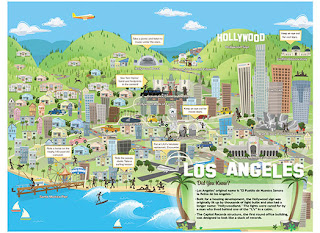 |
| Los Angeles Map |
 |
| Los Angeles Map1 |
Los Angeles Attractions:
Malibu:
 |
| Malibu's beaches |
 |
| Malibu Los Angeles |
California State Parkland carpets the hills behind Malibu, and provides extensive horseback-riding, hiking, running, and mountain-biking options, affording many different views of the Santa Monica Mountains, the curve of the Santa Monica Bay, Santa Catalina Island, and the San Fernando Valley. There are many points of access to the Backbone Trail System scattered throughout the local canyons, as well as a variety of smaller, local trail-heads.
Venice Beach:
 |
| Venice Beach Los Angeles California |
Venice Beach includes the beach, the promenade that runs parallel to the beach ("Ocean Front Walk" or just "the boardwalk"), Muscle Beach, the handball courts, the paddle tennis courts, Skate Dancing plaza, the numerous beach volleyball courts, the bike trail and the businesses on Ocean Front Walk. The basketball courts in Venice are renowned across the country for their high level of streetball; numerous NBA players developed their games or are recruited on these courts.
Along the southern portion of the beach, at the end of Washington Boulevard, is the Venice Fishing Pier. A 1,310-foot (400 m) concrete structure, it first opened in 1964, was closed in 1983 due to El Niño storm damage, and re-opened in the mid-1990s. On December 21, 2005, the pier again suffered damage when waves from a large northern swell caused the part of the pier where the restrooms were located to fall into the ocean.
The Venice Breakwater is an acclaimed local surf spot in Venice. It is located north of the Venice Pier and Lifeguard Headquarters, and south of the Santa Monica Pier. This spot is sheltered on the north by an artificial barrier, the breakwater, consisting of an extending sand bar, piping, and large rocks at its end.
Universal Studios:
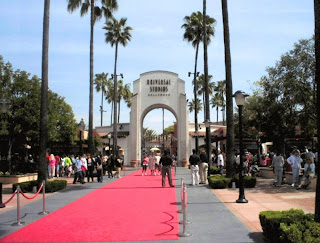 |
| Universal Studios Hollywood Los Angeles California |
Outside the theme park, Universal City includes hotels Universal Hilton & Towers, the Sheraton Hotels and Resorts, the multi-screen Globe Theatre, often used for banquets and receptions, and Universal CityWalk, which offers a collection of shops and restaurants, as well as the Gibson Amphitheatre, a concert venue.
Griffith Park and Observatory:
 |
| Griffith Observatory is in Los Angeles, California |
3,015 acres (12.20 km2) of land surrounding the observatory was donated to the City of Los Angeles by Colonel Griffith J. Griffith on December 16, 1896. In his will Griffith donated funds to build an observatory, exhibit hall, and planetarium on the donated land. As a Works Progress Administration (WPA) project, construction began on June 20, 1933, using a design developed by architect John C. Austin based on preliminary sketches by Russell W. Porter. The observatory and accompanying exhibits were opened to the public on May 14, 1935. In its first five days of operation the observatory logged more than 13,000 visitors. Dinsmore Alter was the museum's director during its first years; today, Dr. Ed Krupp is the director of the Observatory.
The Getty Museum at the Getty Center:
 |
| J. Paul Getty Museum |
It is one of two locations of the J. Paul Getty Museum. This branch of the museum specializes in "pre-20th-century European paintings, drawings, illuminated manuscripts, sculpture, and decorative arts; and 19th- and 20th-century American and European photographs". Among the works on display is the painting Irises by Vincent van Gogh. Besides the museum, the center's buildings house the Getty Research Institute (GRI), the Getty Conservation Institute, the Getty Foundation, and the administrative offices of the J. Paul Getty Trust, which owns and operates the center. The center also has outdoor sculptures displayed on terraces and in gardens. Designed by architect Richard Meier, the campus includes a central garden designed by artist Robert Irwin. GRI's separate building contains a research library with over 900,000 volumes and two million photographs of art and architecture. The center's design included special provisions to address concerns regarding earthquakes and fires.
The J. Paul Getty Museum's estimated 1.3 million visitors annually make it one of the most visited museums in the United States. The collection of the J. Paul Getty Museum on display at the Getty Center includes "pre-20th-century European paintings, drawings, illuminated manuscripts, sculpture, and decorative arts; and 19th- and 20th-century American and European photographs". The paintings include:
Arii Matamoe (The Royal End) by Paul Gauguin (1892). The Museum's director, Michael Brand, stated that the purchase of the painting was "one of the key moments in the history of our collection." The literal translation of the Tahitian words of the title are "noble" and "sleeping eyes", which implies "death".
Irises by Vincent Van Gogh (1889). The museum purchased the painting in 1990; it had sold for $53.9 million in 1987.
Portrait of a Halberdier by Pontormo (1528–1530). When the museum bought the painting for $35.2 million at an auction in 1989, "the price more than tripled the previous record at auction for an Old Master painting".
A copy of Portrait of Louis XIV, which measures 114 x 62-5/8 inches, by the workshop of Hyacinthe Rigaud (after 1701).
Getty's photograph collection is located on the lower level of the west pavilion. It includes 35,000 individual prints, 1,500 daguerreotypes and other cased objects, 30,000 stereographs and cartes-de-visite, and 475 albums containing almost 40,000 mounted prints
The museum building consists of a three-level base building that is closed to the public and provides staff workspace and storage areas. Five public, two-story towers on the base are called the North, East, South, West and the Exhibitions Pavilions. The Exhibitions Pavilion acts as the temporary residence for traveling art collections and the Foundation's artwork for which the permanent pavilions have no room. The permanent collection is displayed throughout the other four pavilions chronologically: the north houses the oldest art while the west houses the newest. The first-floor galleries in each pavilion house light-sensitive art, such as illuminated manuscripts, furniture, or photography. Computer-controlled skylights on the second-floor galleries allow paintings to be displayed in natural light. The second floors are connected by a series of glass-enclosed bridges and open terraces, both of which offer views of the surrounding hillsides and central plaza. Sculpture is also on display at various points outside the buildings, including on various terraces and balconies. The lower level (the highest of the floors in the base) includes a public cafeteria, the terrace cafe, and the photography galleries.
Third Street Promenade:
 |
| Third Street Promenade |
Grauman's Chinese Theatre:
 |
| Grauman's Chinese Theater |
The Chinese Theatre was commissioned following the success of the nearby Grauman's Egyptian Theatre which opened in 1922. Built over 18 months, from January 1926 by a partnership headed by Sid Grauman, the theater opened May 18, 1927, with the premiere of Cecil B. DeMille's film The King of Kings. It has since been home to many premieres - including the 1977 launch of George Lucas's Star Wars - birthday parties, corporate junkets and three Academy Awards ceremonies. Among the theater's most distinctive features are the concrete blocks set in the forecourt, which bear the signatures, footprints, and handprints of popular motion picture personalities from the 1920s to the present day.
LA Brea Tar Pits:
 |
| La Brea Tar Pits |
Disneyland Los Angeles:
 |
| Disneyland Park |
Walt Disney came up with the concept of Disneyland after visiting various amusement parks with his daughters in the 1930s and 1940s. He initially envisioned building a tourist attraction adjacent to his studios in Burbank to entertain fans who wished to visit; however, he soon realized that the proposed site was too small. After hiring a consultant to help determine an appropriate site for his project, Walt bought a 160-acre (65 ha) site near Anaheim in 1953. Construction began in 1954 and the park was unveiled during a special televised press event on the ABC Television Network on July 17, 1955.
 |
| Sleeping Beauty Castle at Disneyland |
Disneyland has a larger cumulative attendance than any other theme park in the world, with close to 600 million guests since it opened. More people have walked through Disneyland's turnstiles then any other park on the planet. In 2010, 15.98 million people visited the park, making it the second most visited park in the world that calendar year.
Lands of Disneyland:
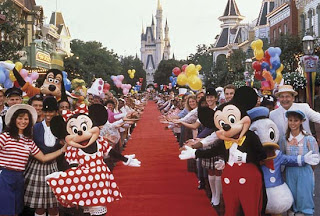 |
| Main Street U.S.A. at Disneyland |
Main Street, U.S.A.:
Main Street, U.S.A. is patterned after a typical Midwest town of the early 20th century. Walt Disney derived inspiration from his boyhood town of Marceline, Missouri and worked closely with designers and architects to develop the Main Street appeal. It is the first area guests see when they enter the park (if not entering by monorail), and is how guests reach Central Plaza. At the center of The Magic Kingdom and immediately North of Central Plaza stands Sleeping Beauty Castle, which provides entrance to Fantasyland by way of a drawbridge across a moat. Adventureland, Frontierland, and Tomorrowland are arrayed on both sides of the castle.
Adventureland (Disney):
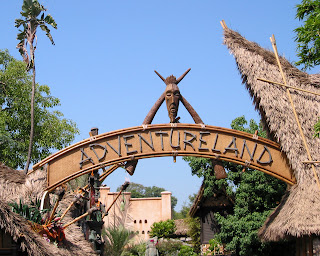 |
| Adventureland |
New Orleans Square:
New Orleans Square is a themed land based on 19th-century New Orleans. It was opened to the public on July 24, 1966. Despite its age, it is still very popular with Disneyland guests, being home to some of the park's most popular attractions: Pirates of the Caribbean and the Haunted Mansion, including nighttime entertainment in Fantasmic!.
Frontierland:
 |
| Frontierland |
Critter Country:
 |
| Critter Country |
Fantasyland:
 |
| Fantasyland |
Mickey's Toontown:
Mickey's Toontown opened in 1993 and was partly inspired by the fictional Los Angeles suburb of Toontown in the Walt Disney Studios' 1988 release Who Framed Roger Rabbit. Mickey's Toontown is based on a 1930s cartoon aesthetic and is home to Disney's most popular cartoon characters. Toontown features two main attractions: Gadget's Go Coaster and Roger Rabbit's Car Toon Spin. The "city" is also home to cartoon character's houses such as the house of Mickey Mouse, Minnie Mouse and Goofy, as well as Donald Duck's boat.
Tomorrowland:
 |
| Tomorrowland |
Current attractions include Space Mountain, Innoventions, Captain EO Tribute, Autopia, the Disneyland Monorail Tomorrowland Station, the Astro Orbitor and Buzz Lightyear Astro Blasters. Finding Nemo Submarine Voyage opened on June 11, 2007, resurrecting the original Submarine Voyage which closed in 1998. Star Tours was closed in July 2010, and replaced with Star Tours: The Adventures Continue in June 2011.
Watts Towers:
 |
| The Watts Towers or Towers of Simon Rodia |
The Watts Towers are located near (and visible from) the 103rd Street-Kenneth Hahn Station of the Metro Rail LACMTA Blue Line. They were designated a National Historic Landmark in 1990.
K1 Speed - Indoor Kart Racing:
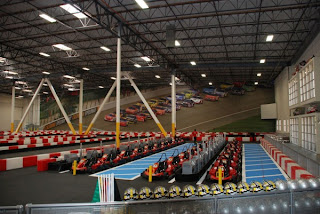 |
| K1 Speed |
K1 Speed was co-founded in 2003 by race car driver Boris Said. K1 Speed features European-built electric go karts capable of 40 mph (64 km/h), asphalt tracks, and computerized scoring. Ranging from 70,000 to 100,000 sq ft (6,500 to 9,300 m2) in size, K1 Speed's facilities are the largest indoor tracks on the West Coast.
The chain operates tracks in Carlsbad, Irvine, Anaheim, Ontario, Torrance, and Santa Clara California and one track in the Seattle, Washington area
Santa Monica Pier:
 |
| Santa Monica |
Santa Monica is home to executives and Hollywood celebrities amongst others and it is a mixture of affluent, single-family neighborhoods, renters, surfers, young professionals, and students. The Census Bureau 2010 population for Santa Monica is 89,736. Santa Monica is named after Saint Monica of Hippo because the area in which the city is now located was first visited by Spaniards on her feast day.
Partly because of its agreeable climate, Santa Monica had become a famed resort town by the early 20th century. The city has experienced a boom since the late 1980s through the revitalization of its downtown core with significant job growth and increased tourism.
Santa Monica Attractions and cultural resources:
 |
| Santa Monica1 |
Santa Monica has three shopping districts, Montana Avenue on the north side of the city, the Downtown District in the city's core, and Main Street on the south end of the city. Each of these districts has its own unique feel and personality. Montana Avenue is a stretch of boutique stores, restaurants, and small offices that generally features more upscale shopping. The Main Street district offers an eclectic mix of clothing, restaurants, and other specialty retail.
The Downtown District is the home of the Third Street Promenade, a major outdoor pedestrian-only shopping district that stretches for three blocks between Wilshire Blvd. and Broadway (not the same Broadway in downtown and south Los Angeles). Third Street is closed to vehicles for those three blocks to allow people to stroll, congregate, shop and enjoy street performers. Santa Monica Place, the indoor mall designed by Frank Gehry, is located at the south end of the Promenade. After a period of redevelopment, the mall reopened in the fall of 2010 as a modern shopping-entertainment complex with more outdoor space.
Santa Monica hosts the annual Santa Monica Film Festival.
The oldest movie theater in the city is the Majestic. Also known as the Mayfair Theatre, the theater which opened in 1912 has been closed since the 1994 Northridge earthquake. The Aero Theater (now operated by the American Cinematheque) and Criterion Theater were built in the 1930s and still show movies. The Santa Monica Promenade alone supports more than a dozen movie screens.
Palisades Park stretches out along the crumbling bluffs overlooking the Pacific and is a favorite walking area to view the ocean. It features a camera obscura. For 48 years local churches and the Police Association assembled a 12-tableau story of Christmas in Palisades Park. The sheds were open on the street side, protected by chain-link fencing (for years there was no fencing because vandalism was not yet a large problem). Inside were dioramas of the Holy Family made from store mannequins; critics argued that many of them did not resemble real people, were damaged, or were otherwise inappropriate. In 2001 the city decided to temporarily end the practice of allowing private groups to place displays in city parks, but in 2004 the Christmas displays returned.
The Santa Monica Steps, a long, steep staircase that leads from north of San Vicente down into Santa Monica Canyon, is a popular spot for all-natural outdoor workouts. Some area residents have complained that the stairs have become too popular, and attract too many exercisers to the wealthy neighborhood of multimillion-dollar properties.
Natives and tourists alike have enjoyed the Santa Monica Rugby Club since 1972. The club has been very successful since its conception, most recently winning back-to-back national championships in 2005 and 2006. Santa Monica defeated the Boston Irish Wolfhounds 57-19 in the Division 1 final, convincingly claiming its second consecutive American title on June 4, 2006, in San Diego. They offer Men's, Women's and a thriving children's programs. The club recently joined the Rugby Super League.
Every fall the Santa Monica Chamber of Commerce hosts The Taste of Santa Monica on the Santa Monica Pier. Visitors can sample food and drinks from Santa Monica restaurants. Other annual events include the Business and Consumer Expo, Sustainable Quality Awards, Santa Monica Cares Health and Wellness Festival, and the State of the City.
Santa Monica is an international mecca for skateboarding culture.
Marina del Rey:
 |
| Marina del Rey |
Hollywood:
 |
| Hollywood |
 |
| Hollywood Hills in Hollywood, California |
As a district within the Los Angeles city limits, Hollywood does not have its own municipal government. There was an official, appointed by the Hollywood Chamber of Commerce, who served as an honorary "Mayor of Hollywood" for ceremonial purposes only. Johnny Grant held this position from 1980 until his death on January 9, 2008. However, no replacement has ever been named after Grant's death.
South Bay Redondo Beach:
 |
| South Bay Redondo Beach |
The picture at right uses the broadest definition of the region, including all communities south of Interstate 105 and west of Long Beach (with the exception of Compton, which is generally considered South LA). The South Bay includes the Beach Cities (Manhattan Beach, Hermosa Beach, Redondo Beach), El Segundo, the Palos Verdes Peninsula, Inglewood, Hawthorne, Gardena, Carson, Lawndale, Harbor City, Torrance, Lomita, and San Pedro. The region is bordered on the north by the Westside, on the northeast by South Los Angeles, on the east by the Gateway Cities, and on the south and west by the Pacific Ocean.
The Harbor (I-110), San Diego (I-405), Gardena (SR 91), and Century (I-105) Freeways provide the region with its principal transportation links. The Los Angeles MTA's Blue Line (opened in 1990) is a light rail line running between Downtown Los Angeles and Downtown Long Beach. It is the first of the MTA's modern rail lines since the 1961 demise of the Pacific Electric Railway's Red Car system. The Green Line (opened in 1995, together with the Glenn Anderson Freeway) also serves the South Bay is a light rail line running between Redondo Beach and Norwalk in the median of the Century Freeway (Interstate 105), providing indirect access to Los Angeles International Airport via a shuttle bus. Several ports and harbors in the South Bay provide access to Santa Catalina Island, a popular resort. In addition, Los Angeles International Airport borders El Segundo to the north in the neighborhood of Westchester, Los Angeles.
Note that in San Diego, "South Bay" refers to the South Bay of the San Diego Area. This area includes cities such as Chula Vista and National City. In Northern California, "South Bay" refers to the South Bay of the San Francisco Bay Area.
Redondo Beach is a full-service city with its own police, fire and public works departments, two public libraries, a performing arts center, fifteen parks, thirteen parkettes, a large recreational and commercial harbor including King Harbor, a 1,500-slip private craft port; the Redondo Beach Pier and Seaside Lagoon; and a bathing and surfing beach.
Located in the choice coastal edge of Los Angeles County, just twenty miles from downtown Los Angeles and seven miles south of Los Angeles International Airport, Redondo Beach has been a preferred resort destination for more than a century and one of the most desirable areas to live in the country.
Redondo Beach is a “charter city” governed by a council-manager form of government. The Mayor is elected at large, and one Council Member is elected from each of the five City districts. The Mayor and Council appoint the City Manager as the chief administrative officer of the City to guide day-to-day operations.
Orange County:
 |
| Orange County |
Tourism remains a vital aspect of Orange County's economy. Anaheim is the main tourist hub, with the Disneyland Resort's Disneyland being the second most visited theme park in the world. Also Knotts Berry Farm which gets about 7 million visitors annually located in the city of Buena Park. The Anaheim Convention Center receives many major conventions throughout the year. Resorts within the Beach Cities receive visitors throughout the year due to their close proximity to the beach, biking paths, mountain hiking trails, golf courses, shopping and dining.
Points of interest:
The area's warm Mediterranean climate and 42 miles (68 km) of year-round beaches attract millions of tourists annually. Huntington Beach is a hot spot for sunbathing and surfing; nicknamed "Surf City, U.S.A.", it is home to many surfing competitions. "The Wedge", at the tip of The Balboa Peninsula in Newport Beach, is one of the most famous body surfing spots in the world. Southern California surf culture is prominent in Orange County's beach cities.
Other tourist destinations include the theme parks Disneyland and Disney California Adventure Park in Anaheim and Knott's Berry Farm in Buena Park. Since the 2011 closure of Wild Rivers in Irvine, the county is home to just one water park: Soak City in Buena Park. The Anaheim Convention Center is the largest such facility on the West Coast. The old town area in the City of Orange (the traffic circle at the middle of Chapman Ave. at Glassell) still maintains its 1950s image, and appeared in the That Thing You Do! movie.
Little Saigon is another tourist destination, being home to the largest concentration of Vietnamese people outside of Vietnam. There are also sizable Taiwanese, Chinese, and Korean communities, particularly in western Orange County. This is evident in several Asian-influenced shopping centers in Asian American hubs like the city of Irvine.
Historical points of interest include Mission San Juan Capistrano, the renowned destination of migrating swallows. The Richard Nixon Presidential Library and Museum is in Yorba Linda and the Richard Nixon Birthplace home, located on the grounds of the Library, is a National Historic Landmark. John Wayne's yacht, the Wild Goose or USS YMS-328, is in Newport Beach. Other notable structures include the home of Madame Helena Modjeska, located in Modjeska Canyon on Santiago Creek; Ronald Reagan Federal Building and Courthouse in Santa Ana, the largest building in the county; the historic Balboa Pavilion in Newport Beach; and the Huntington Beach Pier. The county has nationally known centers of worship, such as Crystal Cathedral in Garden Grove, the largest house of worship in California; Saddleback Church in Lake Forest, one of the largest churches in the United States; and the Calvary Chapel.
Since the premiere in fall 2003 of the hit Fox series The O.C., and the 2007 Bravo series "The Real Housewives of Orange County" tourism has increased with travelers from across the globe hoping to see the sights seen in the show.
Orange County has some of the most exclusive and expensive neighborhoods in the U.S., many along the Orange Coast, and some in north Orange County.
Outside of LA Metro area:
 |
| Greater Los Angeles Area |
The agglomeration of the urbanized Greater Los Angeles area surrounds the urban core of the county of Los Angeles, California. The urban term is defined to refer to the more-or-less continuously urbanized area stretching from Ventura to the southern border of Orange County, and from the Pacific Ocean to the Inland Empire. The Greater Los Angeles area is generally taken to include the Los Angeles metropolitan area, the Inland Empire, and Ventura County – all part of the Census Bureau defined Combined Statistical Area. The term "Greater Los Angeles" does not include San Diego and Imperial counties, whose urbanized areas are not geographically continuous with the urbanized area surrounding Los Angeles. Rather, San Diego is part of the San Diego–Tijuana urban area.
Santa Catalina Island:
 |
| Catalina Island |
One of the Channel Islands of California archipelago, Catalina lies within Los Angeles County. Most of the island is administered by the Catalina Island Conservancy.
The total population as of the 2000 census was 3,696 persons, almost 85 percent of whom live in the island's only incorporated city, Avalon (pop. 3,728 (2010), with another 195 south of town, outside of the city limits). The second center of population is the unincorporated village of Two Harbors, in the north, with a population of 298. Development occurs also at the smaller settlements of Rancho Escondido and Middle Ranch. The remaining population is scattered over the island between the two population centers. The island has an overall population density of 49.29/mi² (19.03/km²).
Tourism and attractions in Santa Catalina Island:
About one million tourists visit Santa Catalina Island every year.
 |
| Santa Catalina Island |
While tourists rarely have an opportunity to surf, two beaches on the "backside" of Catalina offer good waves: Shark Harbor and Ben Weston Beach. Avalon Beach on Catalina Island has made the Natural Resources Defense Council report's list of Top 10 "Repeat Offender" beaches with chronic pollution problems.
Avalon Harbor Beach has ranked among the most polluted in the state, tainted with human sewage that puts swimmers at risk. A report recently by the Natural Resources Defense Council listed Avalon as one of the 10 most chronically polluted beaches in the nation for failing state health tests as much as 73% of the time. Researchers years ago zeroed in on the cause: the city's rickety sewer system, made of century-old clay and metal pipes. Indeed, calling attention to tainted beach water is discouraged in a town where tourism brings in $100 million a year. "It's like using the S-word: Shark," said Wayne Griffin, president and chief executive of the Catalina Island Chamber of Commerce & Visitors Bureau. "Those things bring up emotions in people." That was the experience of Angie Bera, a former Santa Monica Baykeeper biologist who moved to Avalon in 2006 to start a sailboat charter business and store. Last summer Bera, who has since moved off the island, wrote an article in the Catalina Islander saying that Heal the Bay's ranking of Avalon Harbor as the dirtiest beach in the state a "reality check." The reaction was swift. Some on the island said they would boycott Bera's business. The Chamber president canceled his subscription and denounced the negative publicity in a newsletter to island businesses. "I'm not suggesting that we attempt to cover things up or ignore problems," Griffin wrote. "But we don't have to go out of our way to publicize them."
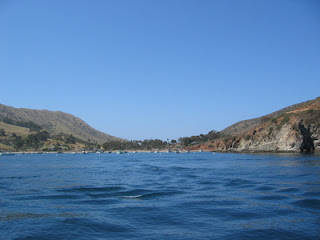 |
| Two Harbors |
Art Good, host of the Jazztrax Showcase of the Absolute Newest, holds the Catalina Island Jazztrax Festival there each year.
The Catalina Island Museum, located in the historic Catalina Casino building, is also an attraction as it is the keeper of the island's cultural heritage with collections numbering over 100,000 items and including over 7,000 years of Native American history, over 10,000 photographs and images, a large collection of Catalina-made pottery and tile, ship models, and much more. The museum features dynamic exhibits on this history and also a unique gift store. Programs include walking tours of Avalon, classes for students, gallery docents, lectures, an annual silent film benefit and more.
Shipwrecks:
Known shipwrecks in the waters off the island include the Diosa del Mar (33.462770°N 118.491925°W), which was sunk July 30, 1990 near Ship Rock, and the famous Su-Jac (among others) just off Casino point. The yacht Valiant burned and sank a couple hundred yards out from Descanso Beach. It had about $75,000 worth of jewelry on board which has never been recovered.
The oldest shipwreck known on Santa Catalina Island is that of a Chinese smuggling ship off Ballast Point on the west side of the island.
Dives are by harbormaster's permit only.
Camping:
The Santa Catalina Island Company has campgrounds at Two Harbors, Parson's Landing, Black Jack, Little Harbor, and Hermit Gulch inland from Avalon. All campgrounds require a reservation and permit. There are also nine primitive boat-in only campgrounds.
Two Boy Scouts of America councils in Los Angeles County have camps north of Two Harbors: Camp Cherry Valley, operated by the San Gabriel Valley Council, located two coves north of Two Harbors at Cherry Cove; and Camp Emerald Bay, operated by the Western Los Angeles County Council, further up the coast.
The island contains another camp named Camp Fox, formerly operated by the YMCA of Glendale, which holds several summer coed youth camps, a summer girl's camp, as well as a Christian leadership conference in spring. As of 2007 Camp Fox also known as Fox Landing is currently owned by the Catalina Island Marine Institute. There is also Campus by the Sea, a camp operated by InterVarsity Christian Fellowship, located at Gallagher's Cove.
There is also a coeducational camp at Howland's Landing named Catalina Island Camps, which has been there since the 1920s. Catalina Island Camps is home to many camps including Camp del Corazon, a camp for kids and counslers with heart disease or defects.
Guided Discoveries (Catalina Island Marine Institute) also runs several camps (Toyon Bay, Fox Landing, and Cherry Cove) on Catalina Island providing hands on opportunities to learn marine science (at Toyon Bay) and environmental studies to school groups and community groups during school year and sea camps during the summer.
Yacht clubs:
Catalina is home to two yacht clubs: Catalina Island Yacht Club is headquartered in Avalon Bay and Isthmus Yacht Club is headquartered in the 1864 Union Army Barracks at Two Harbors. Many mainland yacht clubs maintain Catalina stations.
Moonstone is another private cove operated by the Newport Harbor Yacht Club of Newport Beach, California.
Just west of Moonstone Cove is Whites Landing. Whites Landing is home to two yacht club camps, Balboa Yacht Club to the west, and San Diego Yacht Club to the east. In the center of the large cove on a 14-acre (57,000 m2) parcel is a private camp and retreat center called the Catalina Experience. The Catalina Experience hosts numerous youth camps, family camps, group retreats and outdoor education programs. Just west of Two Harbors is Fourth of July Yacht Club located in Fourth of July Cove.
Cruising:
Catalina has been an active port of many cruise lines since the 1990s, with Royal Caribbean, Princess Cruises, and Carnival Cruise Lines making the port a regular for Baja cruises. Specifically, Carnival Cruise Lines' Carnival Paradise has made calls to the island every week since 2004, making it the ship to have the most weekly calls to the port, but will leave in November 2011 to be replaced by the Carnival Inspiration. The ships anchor about 100 feet off of Avalon Harbor.
Rodeo Drive:
 |
| Rodeo Drive in Beverly Hills, Kalifornien, USA |
Beverly Hills:
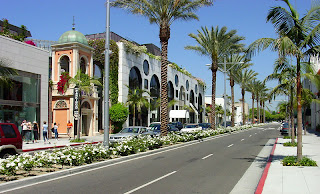 |
| Beverly Hills |
Beverly Hills and the neighboring city of West Hollywood are together entirely surrounded by the city of Los Angeles. To be specific, Beverly Hills is bordered on the northwest by the Los Angeles neighborhood of Bel-Air and the Santa Monica Mountains, on the east by West Hollywood, the Carthay neighborhood of Los Angeles, and the Fairfax District of Los Angeles, and on the south by the Beverlywood. The area's "Platinum Triangle" of affluent neighborhoods is formed by the city of Beverly Hills and the Los Angeles neighborhoods of Bel Air and Holmby Hills.
Los Angeles Downtown:
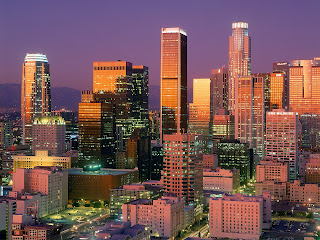 |
| Downtown Los Angeles, California, United States |
Though downtown is generally thought to be bounded by the Los Angeles River on the east in Lincoln Heights, the Hollywood (101) Freeway to the north, the Santa Monica (10) Freeway on the south and the Harbor (110) Freeway on the west, some sources, including the Los Angeles Downtown News and Los Angeles Times, extend the area past the traditional boundary to include University Park and Exposition Park, encompassing the University of Southern California (USC) and Central City West neighborhoods.
Neighborhoods and Attractions:
Pueblo (Union Station and Olvera Street):
 |
| Union Station in Downtown Los Angeles |
- On the northeastern edge of downtown Los Angeles, the bustling Los Angeles Union Station (known as the "Last of the Great Railway Stations") serves as the region's main transportation hub, with the convergence of six commuter rail lines, two subway lines, a light rail line, Amtrak service and multiple local and regional bus services. The station, opened May 1939, is a massive building in the Art Deco, Moorish and Spanish Mission styles, that serves a growing rail and bus passenger market. Station grounds include soaring ceilings, deep leather-and-wood chairs, and two adjoining greenspaces and fountains flanking the main passenger concourse. The Los Angeles Conservancy offers guided tours of Union Station for a small fee.
- Across Alameda Street from Union Station is the historic center of the city, El Pueblo de Los Angeles, enshrined as Olvera Street, a collection of historic shops, restaurants and several museums, as well as La Placita Olvera and Our Lady Queen of the Angels Church.
- The Old Plaza Firehouse is a museum dedicated to historic firefighting artifacts and memorabilia, including historical maps of the city of Los Angeles.
- The Chinese American Museum is located in the historic Garnier Building and features exhibits detailing the lives of Chinese Americans in early California as well as contemporary works by Chinese American artists.
- Philippe the Original, a 1908 eatery that lays a competing claim (along with Cole's Pacific Electric Buffet) to the invention of the French dip sandwich, is among the oldest eateries in the city.
Chinatown:
 |
| Chinatown |
- Centered along North Broadway and North Hill Street, Chinatown Central Plaza, also known as "New Chinatown," is the central gathering place in the neighborhood.
- Operated by the Chinese Historical Society of Southern California, the Chinatown Heritage & Visitors Center is open to the public and aims to share the Chinese-American history of the Los Angeles area.
- Los Angeles State Historic Park, downtown's largest greenspace, lies north of the light rail station on North Spring Street.
Little Tokyo:
 |
| "Ramen Row" on Historic First Street in Little Tokyo, Downtown LA |
Little Tokyo is accessible via the nearby Metro Red/Purple Line Civic Center Station, and the Little Tokyo light-rail station on the Metro Gold Line.
- Pedestrian activity in the neighborhood is centered around the Japanese Village Plaza, an open-air shopping area spanning First and Second streets. The center is home to Nijiya Market, Mikawaya Ice Cream, Yamazaki Bakery and several other stores and eateries, as well as a landmark watchtower on First Street.
- Historic First Street is an active restaurant row, with many establishments specializing in Japanese ramen noodles. Fugetsu-do, a century-old establishment that specializes in mochi, a Japanese rice-based snack, is located on this corridor.
- Weller Court is a retail complex anchored by Marukai Market at the intersection of Second and San Pedro streets. Three levels of Japanese-themed shops and restaurants face an interior courtyard. The shopping center also features a memorial to the seven crewmembers killed in the Space Shuttle Challenger disaster.
- The Japanese American National Museum (JANM) is Little Tokyo's largest cultural facility and plays host to several exhibits detailing the plight of Japanese American citizens during the World War II era, as well as historical perspectives and contemporary works by Japanese American artists.
- Little Tokyo is home to a secondary campus of the Museum of Contemporary Art (MOCA), the Geffen Contemporary.
Civic Center:
Los Angeles's Civic Center is the government center of the city and is home to several federal, state, county and municipal administrative buildings. The main office of the Los Angeles Times is located in the district. The neighborhood is accessible via the Metro Red/Purple Line Civic Center Station.
- The new Los Angeles Police Department Police Administration Building, designed by DMJM Architects, replaced the aging Parker Center, which is slated for demolition. A public park is located on the Second Street side of the building.
- As part of the Caltrans District 7 Headquarters project, a public art project was placed in the entrance plaza. The large-scale artwork uses a series of neon tubes to mimic the flow of traffic on a freeway.
- The Los Angeles Mall (park) stretches between City Hall on the east and the Los Angeles Music Center on adjoining Bunker Hill. Plans call for a 16-acre (65,000 m2) replacement park[16] designed by Rios Clementi Hale Studios. The plan includes a large community gathering space at the foot of City Hall, new gardens and green space between the Los Angeles County Hall of Administration and the court houses, and an overhaul of an existing fountain.
- An observation deck on the 27th floor of City Hall is open to the public on weekdays.
Bunker Hill:
 |
| Buildings in downtown Los Angeles, California, USA |
 |
| Walt Disney Concert Hall, Bunker Hill |
- The Los Angeles Music Center is a complex of music and theatrical halls on the Grand Avenue cultural corridor between Temple Street to the north and Second Street to the south, including the Dorothy Chandler Pavilion, Mark Taper Forum, Ahmanson Theater and Walt Disney Concert Hall.
- The Disney Hall opened in 2003 as the new home of the Los Angeles Philharmonic and the Los Angeles Master Chorale, increasing the number of major theaters at the Music Center to four. Also housed in the Disney Hall complex is the smaller REDCAT Theater and art studio. Audio and guided tours are provided by the Music Center.
- Architecture firm A.C. Martin designed the 1964 Los Angeles Department of Water and Power headquarters building at the intersection of First and Hope streets, which was later renamed the John Ferraro Building after the late City Councilman John Ferraro. It is noted for its iconic modern architecture and backlit fountains.
- South of the Music Center is the Museum of Contemporary Art (MOCA), the only museum in Los Angeles dedicated solely to contemporary artworks produced after 1940.
- The Colburn School of Performing Arts is a leading performance and music school, consisting of the School of Performing Arts and the Conservatory of Music.
- Dining and performances are available at the Water Court at California Plaza. Free outdoor concerts are scheduled during the summer, operated by the nonprofit Grand Performances. Several new restaurants have opened in the area in recent years.
- The historic Angels Flight funicular railway sits at the eastern portion of California Plaza. Re-opened in 2010, the twin rail cars Olivet and Sinai serve the Historic Core neighborhood. On a steep incline of Bunker Hill, the railway previously ran from 1901 to 1969, and 1969 to 2001.
Historic Core:
The Historic Core neighborhood is a heavily residential neighborhood of downtown Los Angeles, and many of those residences are adaptive reuse loft units created from formerly vacant historic commercial and office buildings. Guided tours of the Historic Core are offered by the Los Angeles Conservancy for a small fee.
The neighborhood is accessible via the Metro Red/Purple Line Pershing Square Station.
- The Old Bank District, centered around Fourth and Main streets, is a mixed-use loft district, with many of the historic buildings being converted to residential use under the city's adaptive reuse ordinance. At the same time, a growing number of restaurants, coffee shops, and bars are contributing toward the revitalization of this neighborhood.
- Downtown's Gallery Row is a city-recognized art gallery district in the Historic Core. Starting with three art galleries in 2003, Gallery Row claimed 50 art galleries as of 2009. The Downtown Art Walk is held on the Second Thursday of every month from 12 to 9 pm, and attracts nearly 5,000 attendees.
- The Bradbury Building, built in 1893, is the oldest office building in Los Angeles and features an interior courtyard with intricate wrought-iron staircases and railings, and a glass-and-iron ceiling.
- Grand Central Market, an open-air produce market and food court, captures a multi-ethnic, early-1900s feel, with vendors selling produce, spices, and ethnic meals in the ground floor of the 1905 Homer Laughlin Building.
- Cole's is the oldest existing restaurant in Los Angeles, opening in 1908. Known for its French dip sandwiches, along with Philippe's to the north, the restaurant and bar recently underwent a renovation with a new kitchen, chef, and restored bar.
- The Broadway Theatre District is a collection of historic movie palaces, some of which are undergoing renovation for use as performance spaces. Guided tours of the neighborhood are offered by the Los Angeles Conservancy for a small fee.
Financial District:
 |
| Figueroa Street in Downtown LA's Financial District |
- The U.S. Bank Tower, formerly known as the Library Tower, is the seventh-tallest building in the United States, and the tallest building between Chicago and Auckland, New Zealand, at 310 m (1018 ft) tall. Designed by architect I.M. Pei and constructed in 1989, it was initially called Library Tower because the purchase of air rights from the Los Angeles Central Library, located across the street. The air rights purchase allowed a building of such height to be built and paid for a renovation and expansion of the Central Library.
- After suffering two arson fires in 1986, money from air rights purchased for the construction of the Library Tower was used toward expanding and renovating the Richard Riordan Central Library, which was built in 1926 in ancient Egyptian revival style. The library is the third largest in the United States. An ornate rotunda and exhibition gallery greet visitors on the second floor.
- Adjacent to the library is Maguire Gardens, a public greenspace and sculpture garden at the intersection of Fifth and Flower streets.
- At the base of Bunker Hill and the Library Tower lie the Bunker Hill Steps, a classically designed stairway consisting of 103 steps connecting the Financial District to Bunker Hill. The Bunker Hill Steps are often described as Los Angeles's version of Rome's "Spanish Steps."
- The Millennium Biltmore Hotel is one of the grandest hotels in Los Angeles, opening in 1923. The Beaux-Arts-style architecture and several historic ballrooms are a draw for sightseers and tourists. Guided tours are offered by the Los Angeles Conservancy for a small fee.
 |
| L.A. Live development in Downtown Los Angeles |
- The L.A. Live campus consists of over a dozen restaurants, an ESPN Zone arcade, the 7,100-seat Nokia Theatre, the 2,300-seat Club Nokia performance venue and nightclub, and the Latin-themed Conga Room nightclub.
- The Grammy Museum at L.A. Live opened in 2008 in conjunction with the 50th Anniversary of the Grammy Awards. The museum features many interactive exhibits, music memorabilia, and educational opportunities.
Things To Do In Los Angeles CA:
 |
| Things To Do In Los Angeles |
Concerts and Conventions:
While the Hollywood Bowl in Hollywood has more ambience, and the Rose Bowl in Pasadena offers a chance of seeing concerts with 90,000 of your closest friends, the city of LA has its own concert venues that are worth exploring.
Nokia Theatre at LA Live:
Part of the $2.5 billion LA Live project, the Nokia Theatre is located near the Staples Center. The 7,100 seat venue hosts annual events such as the ESPY awards show and major-name concerts.
Staples Center:
While primarily a sports venue, Staples Center also hosts a large number of major-name concerts with its 19,000 seat capacity
LA Convention Center:
Within walking distance of the Staples Center, the massive convention center hosts everything from the annual Electronic Entertainment Expo to the adult film industry's Erotica LA convention
LA Fair:
A taste of rural living just outside of the large metropolis. The LA fair offers fun attractions for the entire family such as a petting zoo and rides.
Pro sports:
LA has great opportunities for seeing live pro sports.
LA Dodgers, Dodger Stadium:
Who wouldn't want to grab a Dodger Dog and enjoy watching a game of baseball in this venerable stadium which opened in 1962 and home of 6 time world champions? Also, for $35 you can get all-you-can-eat hot dogs, sodas, and nachos at the Right Field Pavilion.
LA Lakers, Staples Center:
Do they need an introduction? They are the most popular basketball team in the city. Prices are very high (the most expensive ticket in the NBA) but you will rarely be disappointed with Kobe Bryant, Pau Gasol and the beautiful Staples Center.
LA Clippers, Staples Center:
The Los Angeles Clippers are a rising NBA team. Tickets are slightly cheaper than Laker tickets. The basketball season runs from late October to June.
LA Kings, Staples Center:
LA's hockey team - One of the NHL's brightest young teams with stars like Anze Kopitar and Dustin Brown. A fun hockey experience and a great, affordable way to experience the Staples Center.
LA Sparks, Staples Center:
LA's women's basketball team - they especially need your support! A good, inexpensive family outing and a chance to be shown that women are just as capable of dazzling the crowd with their athletic prowess as men!! edit
In addition, baseball's LA Angels and hockey's Anaheim Ducks play in nearby Anaheim, and the city's two soccer teams—Chivas USA and the LA Galaxy (featuring David Beckham and USA World Cup star Landon Donovan) of Major League Soccer play at the Home Depot Center in Carson.
Whale Watching Los Angeles:
 |
Whale Watching Los Angeles |
Go Los Angeles Card:
The Go Los Angeles Card is your ticket to the best LA has to offer. For one price you can enter over 40 attractions - including the Paramount Pictures Studio Tour, Warner Bros. VIP Studio Tour, Six Flags Magic Mountain, Kodak Theatre tour, LA City Tours, museums, and much more. The Go Card is the only ticket you need, saving you up to 50% or more compared to buying single tickets at each attraction. And if you buy a 3, 5 or 7 day Card, admission to Universal Studios is included!
Kijubi - Fun Things To Do in Los Angeles:
LA… HOLLYWOOOOOOD! It's time to get out and have fun. Kijubi is your source of booking all of the incredible things Los Angeles has to offer. Like what? Here's a quick peek: theme parks, helicopter tours, dinner cruises, flying lessons, surfing, canyoneering, indoor skydiving, ATV rentals, spa treatments, sailing, jet ski rentals, bungee jumping, polo lessons, horseback riding, wine tasting, paragliding, kayaking, Zeppelin flights, and so much more! On your own, with family and friends, or as a gift, Kijubi truly has an experience for everyone.
Walk the walk in Venice:
Every weekend year-round, crowds flock to the Venice Oceanfront Walk where the mild weather and sea air are only part of the attraction. The most amazing street entertainers in the world are here — chainsaw jugglers, swamis on rollerblades, street dancers...you name it. Start at Windward Avenue and walk north, stopping whenever you see a crowd gathered — there’s sure to be someone intriguing in the center. Out on the sand, follow the beat to the drum circle, a Sunday tradition with dozens of drummers playing for hours.
Hollywood Walk of Fame:
Since the 1960s, more than 2,300 terrazzo and brass stars have been unveiled on Hollywood’s major sidewalks. Among the stars sought out are Marilyn Monroe at 1644 Hollywood Blvd., Steven Spielberg at 7046 Hollywood Blvd., Charlize Theron at 6801 Hollywood Blvd., Elvis Presley at 6777 Hollywood Blvd., The Beatles at 7051 Hollywood Blvd., and Johnny Depp at 7018 Hollywood Blvd.
Discover fossil fun:
At La Brea Tar Pits in Hancock Park, the site of the richest discovery of Ice Age fossils in the world, more than 100 tons of fossilized bones representing nearly 400 species of mammals, birds, reptiles and fish have been unearthed from pools of sticky asphalt dating back to prehistoric time. It’s quite a collection (even Prince Charles asked to visit during an LA trip). You can wander the tar pits themselves, including the big pit still oozing goo near Wilshire Boulevard. The George C. Page Museum of La Brea Discoveries offers free admission on the first Tuesday of every month.
Walk through 200 years of history:
El Pueblo Historical Monument is LA’s birthplace, the site of the original settlement in 1781. At Olvera Street, a bustling Mexican mercado is just to the north. Visitors shop, listen to mariachi music, watch folklore dances and dine at several authentic Mexican restaurants. Tour the Avila Adobe, the oldest existing house in LA. Other restored historic buildings include the Old Plaza Church and the Old Plaza Firehouse.
Discover LA's wilderness:
Los Angeles possesses a wealth of natural wilderness, which attracts avid hikers and bikers to such sites as Topanga State Park, Griffith Park and the Angeles National Forest in Los Angeles. Trails abound in the 65,000-acre Santa Monica Mountains National Recreation Area, encompassing steep cliffs, lush rolling hills, canyons, meadows, waterfalls and sandy beaches, and providing a wilderness habitat for local wildlife.
Step back in time 100 years:
The Victorian era had its influence on local architecture, as evidenced by the homes in the 1300 block of Carroll Avenue in Angeleno Heights. The homes here have been restored to their original ornate splendor. The adjoining streets feature craftsman bungalows interspersed among the Victorians. Raised front lawns and old-fashioned street lamps complete this nostalgic picture, which is a favorite location for film crews. For a small fee, the Los Angeles Conservancy offers walking tours.
Browse around town:
Treasure hunt and star gaze along famed Rodeo (pronounced "row-day-o") Drive in Beverly Hills, home of the rich and super rich. It doesn’t cost a thing to stroll and people-watch on one of the world’s most famous shopping streets.
Travel the world without a passport:
LA’s mini nations enhance the culture and character of this international city. Meet the people and enjoy the foods, arts, music and crafts of Japan, China and a dozen other cultures right here in Los Angeles. Little Tokyo and Chinatown are just two of the ethnic enclaves that invite you to explore. For a more Kosher experience, head over to North Fairfax Avenue and browse the boutiques, produce stands and galleries. A few blocks south on Fairfax is an emerging Ethiopian neighborhood with half a dozen restaurants and cafes.
Relax on LA's own "Riviera.":
Everyone's heard of the French Riviera, but not everyone knows that Los Angeles has a "riviera" of its own: Marina del Rey. The largest man-made, small-craft harbor in the world, Marina del Rey is home to 6,000 in-the-water private yachts. The harbor offers spectacular views and many outdoor activities, including jogging, roller-skating, bicycling or just relaxing in the park. For a free, boatless adventure, head for Burton Chace Park at the end of Mindinao Way. There you’ll be surrounded by water on three sides, and boats will pass majestically in front of you.
See NoHo. The NoHo:
(for North Hollywood) Arts District is a square-mile area that is quickly turning into one of LA’s artsier communities with several galleries, public art, live theaters, boutiques, vintage clothing stores, ethnic restaurants and outdoor cafes. Be sure to browse Lankershim Arts Center, Arts Coalition, Sunny Meyer Fine Arts and Art Academy.
Shopping in L.A.:
Los Angeles has a well-known, diverse and unique shopping traditions and destinations. Shopping malls will dominate your shopping trip as they are nearly inescapable in many of your destinations. For example, the Hollywood & Highland mall is a popular meeting point for those gazing at the Walk of Fame and Mann's Chinese Theater. Other malls you may bump into are the Grove (next to the Farmer's Market) and the Beverly Center, which is quite unlike other shopping malls as it is multilevel with a nice view of Los Angeles from its food court patio.
Lacking any significant public square, Los Angeles funnels its commercial life onto its streets. Among the most popular street is Larchmont Blvd. which caters to the wealthy elite of Hancock Park with one-of-a-kind boutiques. Melrose Avenue, especially in the West Hollywood portion, one-ups Larchmont Blvd. with celebrity presence.
Broadway in Downtown will take you out of the comforts of manicured shopping centers and drop you onto its chaos. With merchandise geared towards the regions's millions of Latinos, forty dollars would probably get you a brand new wardrobe. You will also find pirated DVD's and CD's. You can find a lot of brand name merchandise at discounted prices. Broadway once was the city's premier boulevard and looking up above the gritty flea markets and you would see the opulent theaters that defined luxury in early 20th-century Los Angeles.
For a similar experience in a less-polished, but also livelier environment, try Alvarado Blvd around Wilshire & 6th. This district gives an insight to how most of working-class Los Angeles shops. Big deals can be found on a wide range of counterfeit goods, but don't stay too long after dark when the neighborhood gets sketchy. Make sure to check out the art deco buildings that exist in between the makeshift warehouses (malls), as well as the Alvarado Terrace Park, surrounded by early century mansions.
Hotels in Los Angeles:
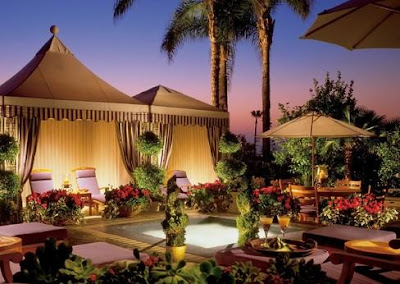 |
| Hotel Los Angeles - Los Angeles, United States |
Plan your vacation using good information about the best places to stay in Los Angeles. Be sure to check out our interactive lodging maps, reader-submitted hotel reviews.
Cheap Hotels In Los Angeles:
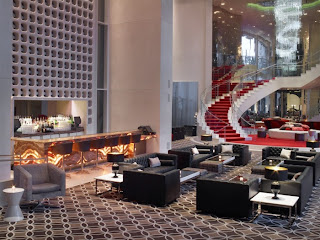 |
| Cheap Hotels In Los Angeles CA |
- Valley Inn & Conference Center
- Oxford Palace Hotel and Gallery
- Brentwood Inn
- Royal Palace Westwood
- Super 8 Los Angeles
- Good Nite Inn Sylmar
- Travelodge Hotel at LAX Airport
- Value Inn Worldwide LAX
- Wingate by Wyndham Los Angeles International Airport LAX
- Best Western Plus Hotel At The Convention Center
- Marina del Rey Hotel
- Marina International Hotel
- Azul Inn West Los Angeles
- Los Angeles Adventurer All Suite Hotel at LAX
- The Historic Mayfair Hotel Los Angeles
- Hollywood Inn Express South
- Holiday Inn Express Hotel & Suites Hollywood Walk of Fame
- Ramada Inn Burbank Airport
- Good Nite Inn - Calabasas
- Ramada Inn Pasadena
- Cadillac Hotel
- Stay on Main
- Ritz Milner Hotel
- The BLVD Hotel & Suites
- Hotel Brandwood
- Country Inn & Suites By Carlson Calabasas
- Tangerine Hotel
- Best Western Plus The Inn at Marina Del Rey
Boutique Hotels In Los Angeles:
 |
| Boutique Hotels In Los Angeles |
- Grafton on Sunset
- Hotel Élan
- Farmer's Daughter Hotel
- Crescent Beverly Hills
- The Belamar Hotel
- The Hilton Checkers Los Angeles
- The O Hotel
- Sunset Tower Hotel
- Petit Ermitage Los Angeles
Beach Hotels In Los Angeles:
 |
| Beach Hotels In Los Angeles |
- Four Seasons Los Angeles
- Loews Santa Monica Beach Hotel
- Venice Beach Hotels in Los Angeles
- Crowne Plaza Redondo Beach and Marina
- Jamaica Bay Inn
- Malibu Beach Inn
- Georgian Hotel
- Hotel Erwin, A Joie de Vivre Boutique Hotel
- JW Marriott Santa Monica Le Merigot
- The Fairmont Miramar Hotel & Bungalows
- Loews Santa Monica Beach Hotel
- Cadillac Hotel
- Hyatt Regency Long Beach
- The Inn at Venice Beach
- Georgian Hotel
- JW Marriott Santa Monica Le Merigot
- Hotel Current
- Hotel Casa Del Mar
Los Angeles Architecture School:
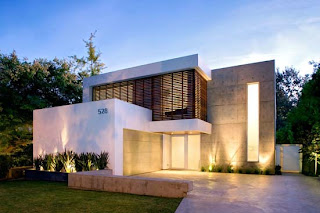 |
| Los Angeles Architecture School |
The city of Los Angeles has 6 schools where architecture faculty can find employment. There are 6 architecture schools in Los Angeles for faculty to choose from. The trends in Los Angeles' architecture academic community can be evaluated by looking at the statistics and graphs below, which includes architecture training at the following levels:
- Architecture Certificate
- Associates degree in Architecture
- Bachelors degree in Architecture
- Masters degree in Architecture
- PhD degree in Architecture
Los Angeles California Photos:
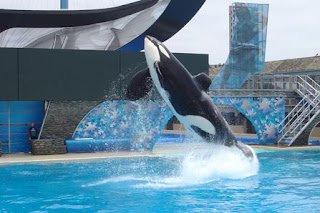 |
| Los Angeles Attractions |
 |
| Hotels In Los Angeles |
 |
| Hotels In Los Angeles1 |
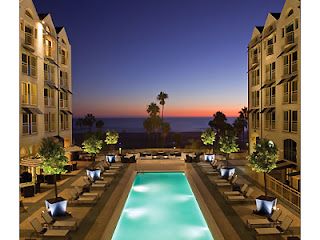 |
| Beach Hotels In Los Angeles |
 |
| Los Angeles Hotels |
 |
| Los Angeles Hotels1 |
 |
| Hotel Shangri-la, LA |
 |
| Malibu Los Angeles CA |
 |
| Venice Los Angeles1 |
 |
| Venice Los Angeles2 |
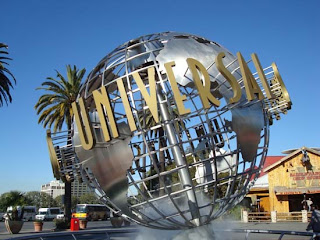 |
| Universal Studios Hollywood Los Angeles California |
 |
| Venice Los Angeles3 |
 |
| Griffith Observatory is in Los Angeles, California |
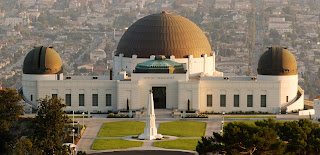 |
| Griffith Observatory, L A, California |
 |
| Griffith Observatory, Los Angeles, California2 |
 |
| Venice |
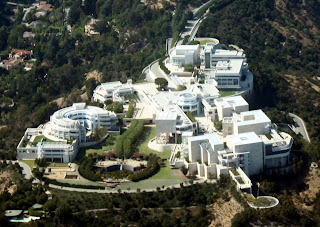 |
| getty museum |
 |
| getty museum garden |
 |
| getty museum garden1 |
 |
| getty museum1 |
 |
| Los Angeles Attractions3 |
 |
| Rodeo Drive, Beverly Hills, LA, CA |
 |
| Los Angeles CA Tourism1 |
 |
| Los Angeles CA Tourism2 |
 |
| Los Angeles CA Tourism3 |
 |
| Los Angeles CA Tourism4 |
 |
| Los Angeles CA Tourism5 |
 |
| Disneyland Map |
 |
| Los Angeles Attractions CA |
 |
| Los Angeles Attractions CA1 |
 |
| Whale_Watching_Los_Angeles |
 |
| Los Angeles California USA |












